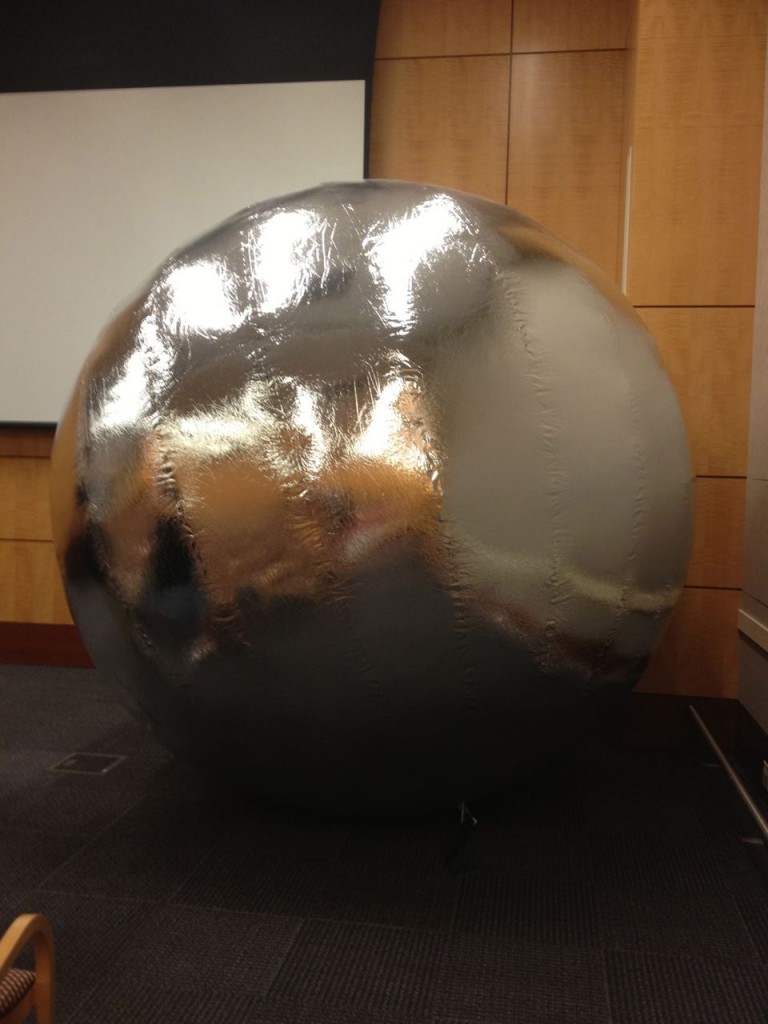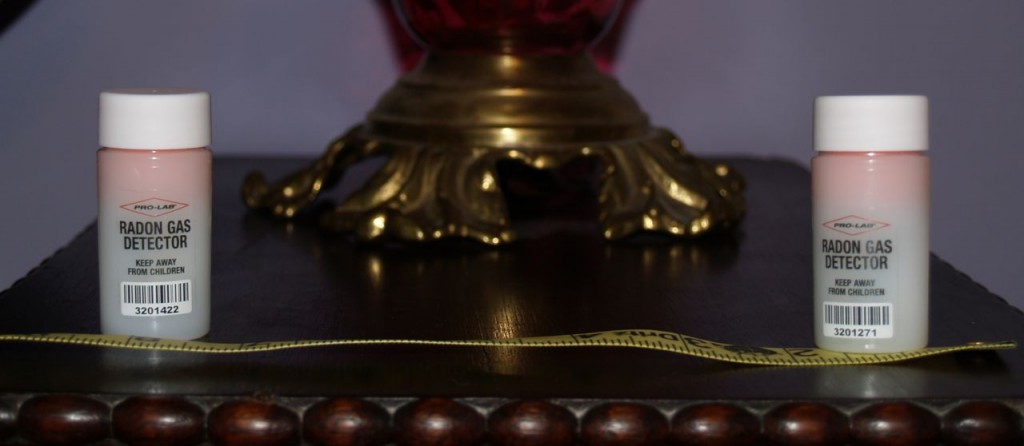Last night, I went to Cultural Programs of the National Academy of Sciences (CPNAS)‘s D.C. Art Science Evening Rendezvous (DASER). It is a monthly discussion forum on art and science. They always have interesting speakers, and it is one of the cool things about living in the DC area. Anyway, last night upon walking into the room right before the program began, I was immediately intrigued by this enormous sphere siting in the corner of the room, which I dubbed the Giant Shiny Ball Play Thing.
I had no idea what this thing was, and there was no mention of it in the program. I envisioned the amazing game of beach ball toss that a large crowd could play with it. The Giant Shiny Ball Play Thing was seriously one of the coolest things I had ever seen, and I wanted one. Sure it was probably about 10 feet in diameter and would never fit in my house. Even if it did fit in my house, putting a shiny inflatable ball in the same house with my cat and her claws would not end well at all.
I finally found out that the Giant Shiny Ball Play Thing is a reproduction of a satelloon. Greg Allen, one of the speakers, had it fabricated as part of his Exhibition Space exhibit. A satelloon is satellite balloon, of course, and I’m going to bet that either an engineer or scientist came up with that name. NASA made satelloons for Project Echo from 1956-1964. I am not going to describe the whole history because Greg Allen has a great summary of the project and the amazing satelloons. If you want even more history, you can read about it straight from NASA. The history is fascinating.
Thus the Giant Shiny Ball Play Thing is really a symbol of some incredible science and engineering history. I still want to play with it though. Also, I took a fun self portrait of myself in the satelloon.
 There, dear readers, now you know what I look like.
There, dear readers, now you know what I look like.
Finally, if like me, you can’t get enough of the Giant Shiny Ball Play Thing, Heather Goss created this fun Vine video of it being deflated.




